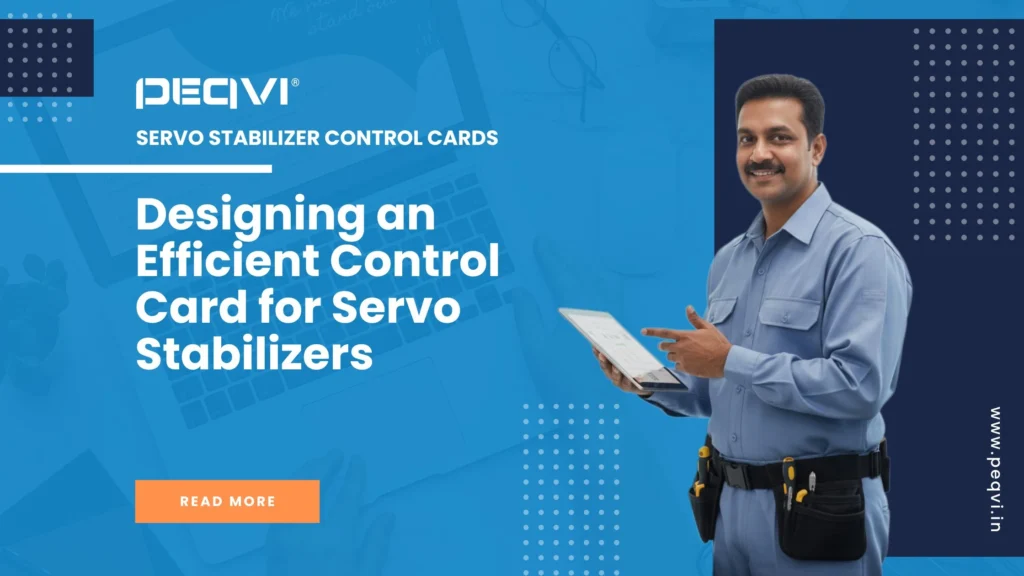A control card is the most important part of a servo voltage stabilizer. It decides how fast and how accurately the stabilizer will respond to voltage changes. A well-designed control card improves performance, reduces energy loss, and extends the life of connected equipment. Understanding the design basics helps in creating a control card that is both efficient and reliable.

Purpose of the Control Card
The control card continuously monitors the input and output voltages of the stabilizer. When the supply voltage fluctuates, it sends a signal to the servo motor to move the brush arm on the autotransformer. This action increases or decreases the output voltage to maintain a steady level. The accuracy of this process depends on how efficiently the control card is designed.
Key Components Used in Control Card Design
- Voltage Sensors
Sensors detect the input and output voltages and send data to the main control circuit. The accuracy of these sensors directly affects the precision of voltage correction. - Comparator or Microcontroller
This is the brain of the card. It compares the actual voltage with the reference voltage and decides the amount of correction needed. Digital control cards mostly use microcontrollers for faster processing. - Relay and Driver Circuit
Relays perform switching operations and protect the stabilizer during overload or short circuit. The driver circuit provides the necessary current to operate these relays or the servo motor. - Feedback Circuit
The feedback system ensures that every voltage correction is verified and adjusted again if needed. It helps maintain a constant output even during frequent fluctuations. - Protection Circuit
Good control cards include overload protection, phase reversal protection, and time delay systems. These features keep both the stabilizer and the connected load safe.
Best Practices for Designing an Efficient Control Card
- Use Quality Components: Choose resistors, capacitors, and relays of high reliability to avoid frequent breakdowns.
- Ensure Proper PCB Layout: Keep signal lines short and separate from power lines to minimize noise.
- Provide Adequate Heat Management: Components that generate heat should have proper spacing or heat sinks.
- Include Calibration Options: Adjustable settings help fine-tune performance during testing.
- Test Under Real Conditions: Always test the control card under different voltage levels and load conditions before production.
Advantages of a Well-Designed Control Card
An efficient control card improves correction speed and reduces response time. It enhances voltage accuracy and lowers mechanical wear on the servo motor. Such design also minimizes maintenance costs and ensures long-term stability.
Conclusion
Designing a control card for servo voltage stabilizers requires careful attention to detail and component selection. A reliable design not only ensures smooth voltage regulation but also increases user confidence in the product. When each part of the circuit works in balance, the stabilizer delivers steady performance for years.

